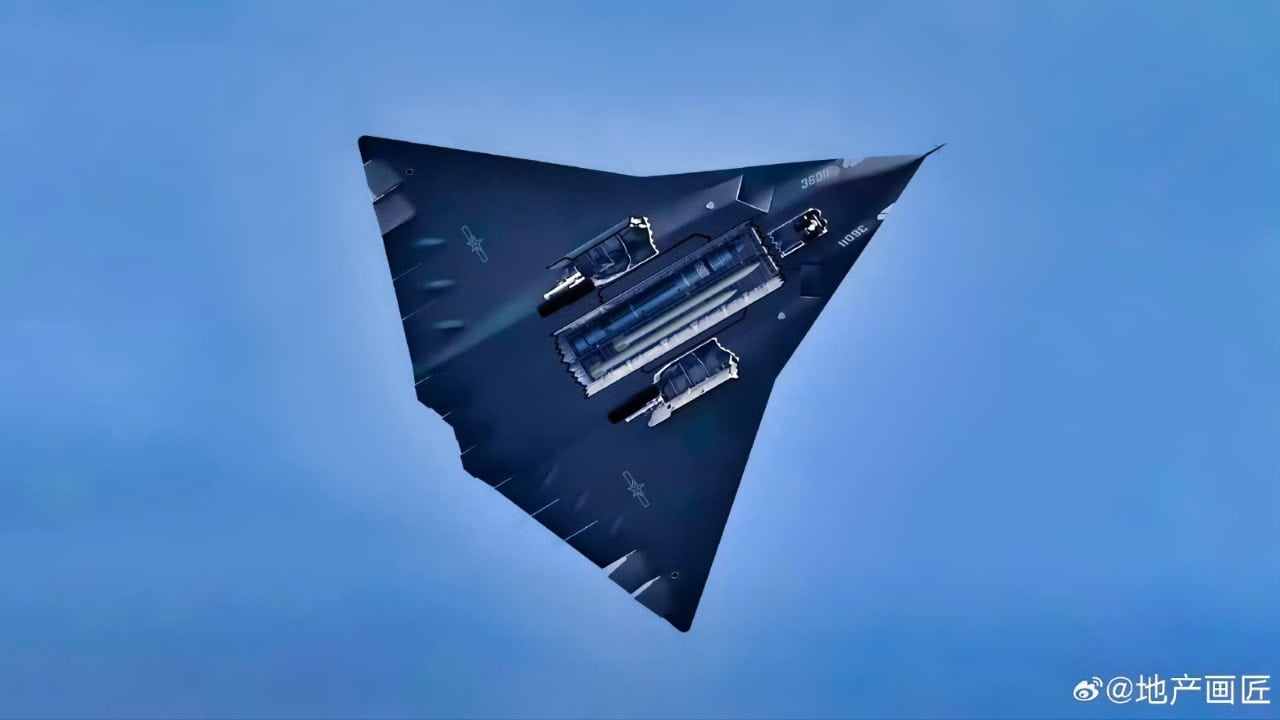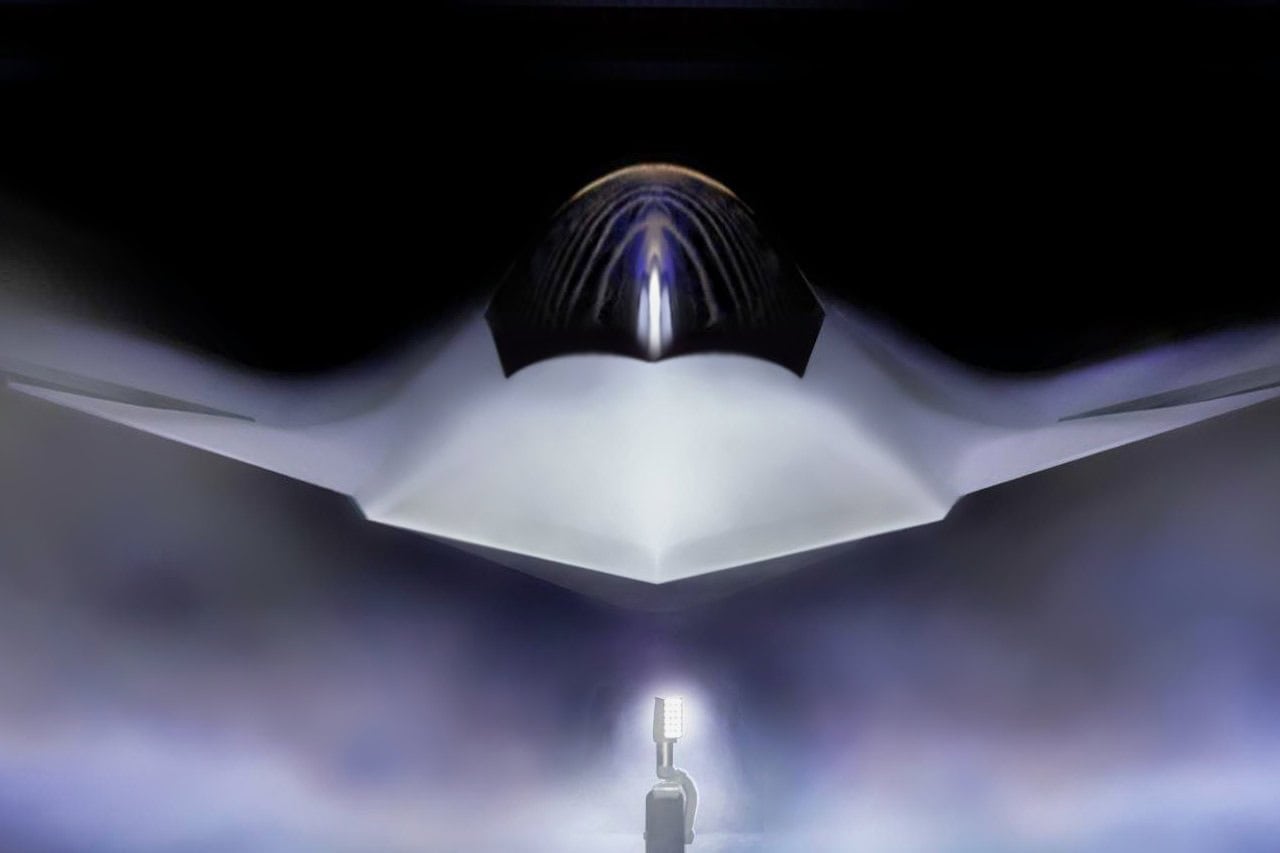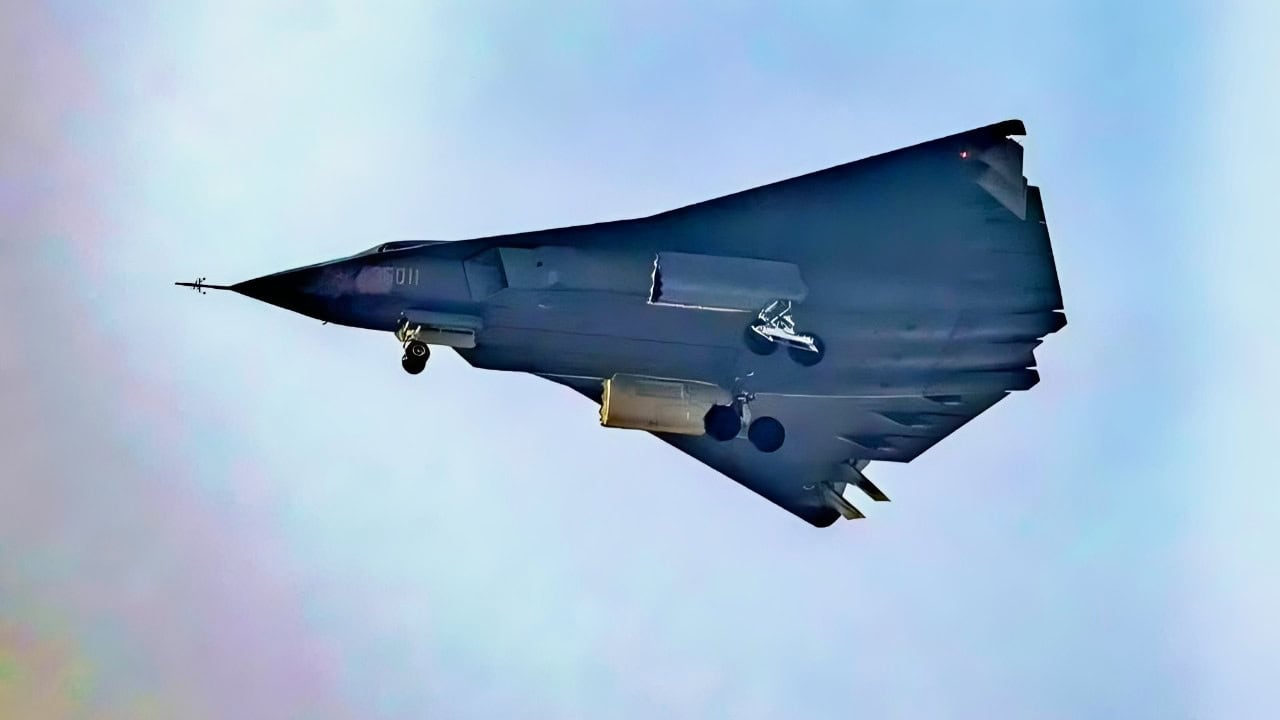Summary and Key Points: China’s recent showcasing of the Chengdu J-36 fighter, coinciding closely with the U.S. announcement of Boeing’s NGAD fighter win, seems deliberately timed as a propaganda maneuver.
-Featuring prominently on state-controlled CCTV rather than typical military enthusiast websites, the flight highlighted the J-36’s impressive reported capabilities, including a 1,750-mile combat radius, Mach 1.35 supercruise, and internal payload capacity of 10 tons.

J-36 or JH-XX from China. Screenshot for Chinese Social Media.
-Analysts suspect that China carefully choreographed the event to project technological superiority and overshadow U.S. aerospace advancements.
-While the true performance remains unverified, this spectacle reinforces China’s strategic narrative that its advanced military aviation is surpassing Western competitors.
Is The J-36 Fighter Third Flight a Planned Spectacle?
Just a few days after US President Donald Trump announced Boeing as the winner of the US Air Force’s Next Generation Air Dominance (NGAD) fighter program, Chinese state-controlled television broadcast footage of the Chengdu J-36 6th-generation fighter—Beijing’s answer to the US program.
What was purported to be a third flight of the aircraft shows its silhouette flying against the sunset backdrop in the southwestern Chinese city of Chengdu.
The subliminal message this footage telegraphed is that no matter the new US program, the sun is setting in the era of dominance for the US in the combat aircraft community. This release by China is one reason why many are asking if the entire “expose” is just another planned spectacle—an act of promotion that the world’s most populous communist state is well-practiced at.
Adding weight to this theory is that the flight also took place on a red-letter day in the history of the Chengdu design team and its associated production partner, Aircraft Plant No. 132. The date is 27 years since the first modern fighter developed at Chengdu, the J-10A, flew for the first time.
The public first saw the J-36 on a December 26 initial flight, which surprised most of the world. What is different about today’s flight and other appearances of the J-36 is that this most recent video footage of the aircraft was not posted on one of the many “military fans” websites in the People’s Republic of China (PRC).
Instead, the massive, new fighter was profiled on China Central Television (CCTV), the communist state’s main national TV network. Again, this indicates official support at the highest levels of the Chinese government for promoting and publicizing what the aircraft is capable of.
The J-36 is the largest combat aircraft of its kind—weighing in at 50 tons in comparison with the next-largest Chinese fighter aircraft from Chengdu, the J-20—a distant second at 37 tons. Due to J-36’s sprawling but diamond-shaped, blended-wing fuselage is also becoming known by nicknames such as Ginkgo Leaf (銀杏葉) or “Flying Doritos.”
A Propaganda Bonanza
“The timing could not have been better if the Communist Party of China (CCP) had scripted it this way,” said a long-time analyst of the People’s Liberation Army (PLA) based in Washington, DC.
“While the US next-generation fighter programs are either only prototypes or just paper designs and Russia’s best fighters are getting clobbered by Ukraine air defenses—here
is the PLA with a massive technological flying marvel that seems to be from another, futuristic age. Like always, the message is ‘China is the future—the rest of you are old news.’”
As if on cue, one of the many Chinese military enthusiast magazines has released an issue this month with several details of the J-36 design.
It would have required considerable time for these materials to be cleared for publication. With its release coming as more information about the aircraft is being made public on the airwaves it is unlikely that the aircraft being profiled this month is just a coincidence. It is almost assuredly another planned confluence of events.
The magazine, Shipborne Weapons, is one of several sanctioned to release details on Chinese weapons systems and publish images before they are presented at an air show or some other official forum.
J-36 Details
The massive size of the aircraft gives it room for an internal fuel load of 18.5 tons. Even with its three engines all burning fuel, it still has a combat radius of 1,750 miles. This range compares with 1,060 miles for the J-20 and estimates of 870 miles for the F-22A.
The maximum altitude of 82,000 feet is significantly above the J-20’s 60,000 or the F-22A’s 50,000-plus feet. The J-36 can supposedly supercruise at Mach 1.35 for up to 90 minutes, which beats the 1.2-1.7 Mach for up to 45 minutes for the J-20. F-22A is slightly faster at 1.75 Mach but can maintain this speed for only 125 miles.
The J-36 internal weapons load is rated at up to 10 tons at less than its maximum range—again beating the J-20’s 8 tons. Since no one has seen the aircraft up close, the estimates of its dimensions range from 66 to 85 feet long and a wingspan of close to 65 feet.
While there is no way of validating any of these numbers, and they have not been published elsewhere, the same People’s Liberation Army (PLA) analyst pointed out that these performance estimates are well within the parameters of what would be expected for a platform of this size. They do not appear to be exaggerations designed to pump up the image of either the aircraft or the Chengdu Design Bureau.
The size of the J-36 and its design seem optimized for a long-range fighter-bomber mission. This would seem to explain the USAF’s previous statements about the performance requirements for the NGAD fighter program—namely, the need to present a credible counter to the J-36.
The other new technology with the NGAD is new and better missile defenses for the next-generation US fighter beyond conventional electronic warfare. Both are easier to understand when looking at the Chengdu platform’s formidable capabilities.
F-47: America’s 6th Generation Fighter to Compete with J-36

Shown is a graphical artist rendering of the Next Generation Air Dominance (NGAD) Platform. The rendering highlights the Air Force’s sixth generation fighter, the F-47. The NGAD Platform will bring lethal, next-generation technologies to ensure air superiority for the Joint Force in any conflict. (U.S. Air Force graphic)

Shown is a graphical artist rendering of the Next Generation Air Dominance (NGAD) Platform. The rendering highlights the Air Force’s sixth generation fighter, the F-47. The NGAD Platform will bring lethal, next-generation technologies to ensure air superiority for the Joint Force in any conflict. (U.S. Air Force graphic)
About the Author: Reuben F. Johnson
Reuben F. Johnson is a survivor of the February 2022 Russian invasion of Ukraine and is now an Expert on Foreign Military Affairs with the Fundacja im. Kazimierza Pułaskiego in Warsaw. He has been a consultant to the Pentagon, several NATO governments, and the Australian government in the fields of defense technology and weapon systems design. Over the past 30 years he has resided in and reported from Russia, Ukraine, Poland, Brazil, the People’s Republic of China and Australia.

